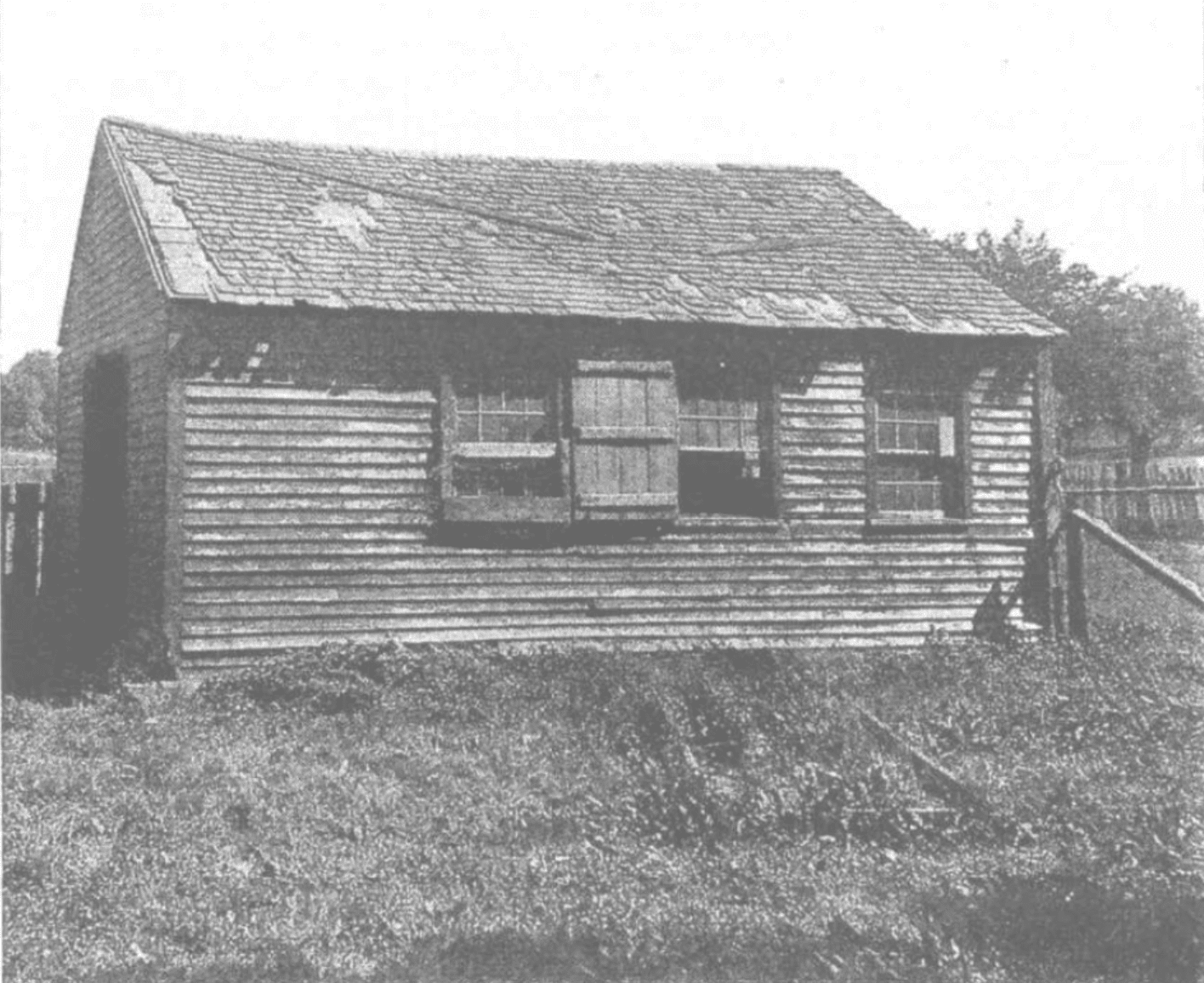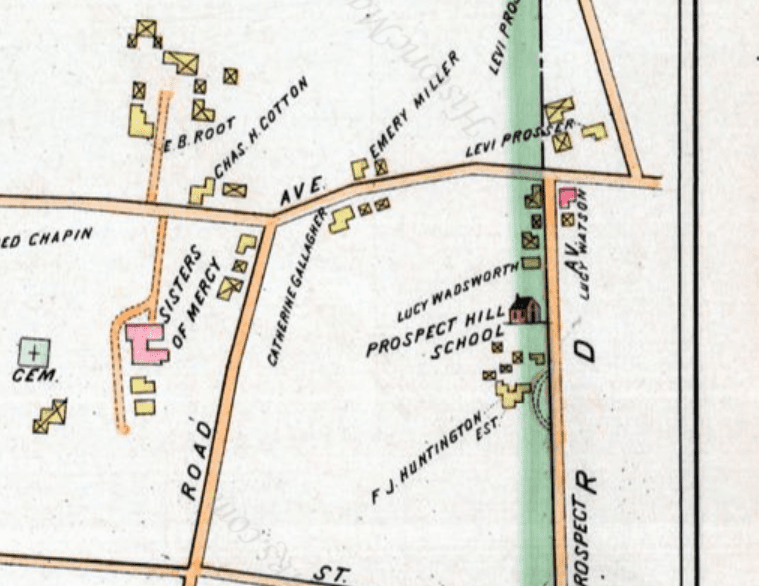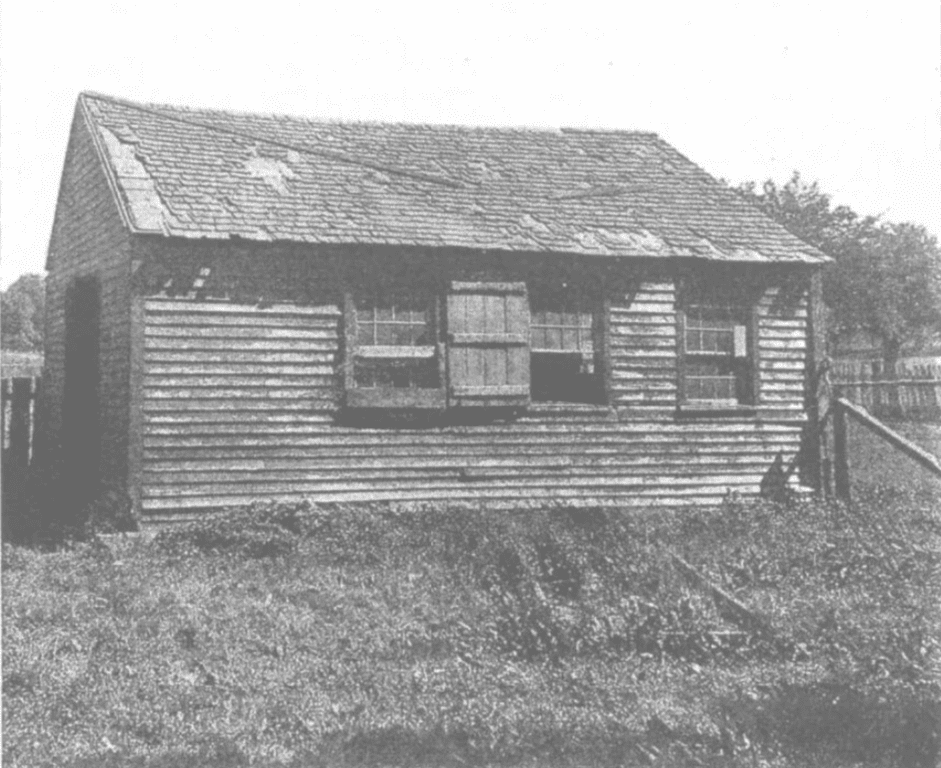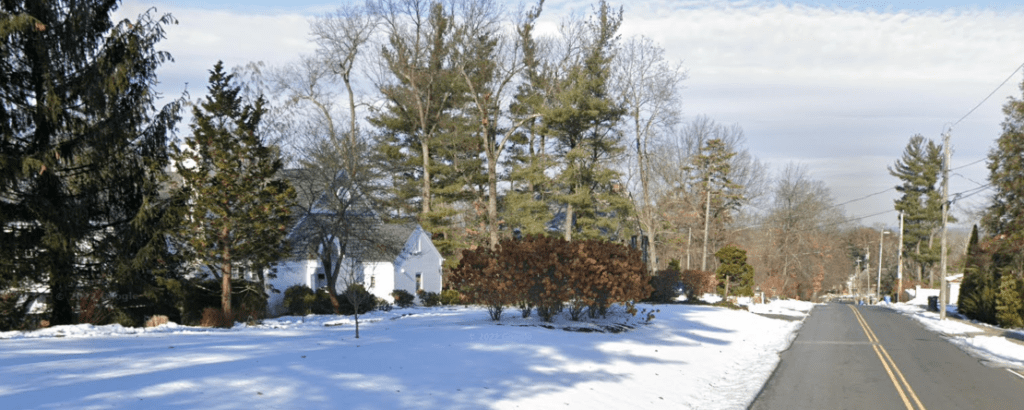From the West Hartford Archives: Prospect Hill School

Audio By Carbonatix

Prospect Hill School. Photo courtesy of the Noah Webster House & West Hartford Historical Society
Historian Jeff Murray takes a look into West Hartford’s past to uncover some surprising information, stir up some memories, or reflect on how much life has changed – or hasn’t changed at all. Enjoy this week’s ‘From West Hartford’s Archives’ …
By Jeff Murray
The Prospect Hill School, which once stood at the top of the hill on the west side of Prospect Avenue near Albany Avenue, was the product of West Hartford’s early school system.
Before independence from Hartford in 1854, the School Society managed the public schools in divided districts. At the time of the earliest records of the Society in 1823, there were six districts: Center, South, South Middle, West, Northwest, and North. When a new district in the east was created around 1831, it was bounded loosely by land at Park Road, Albany Avenue, Steele Road, and a portion of land in the Hartford Division around Sisson Avenue and Woodland Street. The Prospect Hill school was built on this site in the middle and at the highest point in 1837.
The most influential family in this vicinity was the Wadsworths. William Wadsworth was one of the founders of Hartford and his descendants that retained a connection to the area was vast. In the 1700s, the Wadsworths enslaved at least one man, Peleg Nott, who supervised the farm in the area of Prospect Avenue and Albany Avenue until he was freed before 1780.
At the peak of their land holdings, the Wadsworths owned land on both sides of Prospect Avenue to the tune of 130 acres. Later, Elisha Wadsworth built a brick house in 1828 at the southeast corner of Prospect Avenue and Albany Avenue (technically in Hartford) and ran it as a tavern for 16 years before it passed to his son Sidney, a prominent farmer and horse breeder. According to William Hall’s book, while the tavern and house were on the Hartford side of Prospect Avenue, the barns and sheds were located on the west side, on the current site of the Calvary Church.
Sidney Wadsworth ran the tavern until it was discontinued in 1862 and he died in 1887, leaving the house to his son Daniel and his unmarried sister Lucy. The Wadsworth house later was turned 90 degrees to the west to face Prospect Avenue and was renovated in 2014 after it fell into disrepair. When the school district was organized in the early 1830s, the meeting had been held at the Wadsworth house not far north from the proposed site. Elisha Wadsworth leased land to the newly created district for the one-room wooden school built in 1837 and pictured here c. 1922.
Due to its proximity to the city, the district had a good number of early years. Hall’s book provides an interesting look at the school’s costs in the 1853-1854 winter term – a total of $88.50 for three months. The teacher, who received $75.00 cash for three months (85% of the school’s expenditures), was a student from Dartmouth College who was on leave of absence. Other costs were for things like a broom (16 cents), a latch for the door (8 cents), and 3 cords of wood ($10), all paid to the treasurer of the district, Sherman Steele, a neighbor.
In 1875, the school was moved away and converted to a carriage house while a newer brick school was built on nearly the same site on Prospect Hill. Elisha Wadsworth had been heavily involved in the original school in the 1830s, but his son Sidney was on the building committee for the second one. In 1877, the town voted for a consolidated management of the public schools (rather than locally managed districts); however, most of the districts voted in opposition of the plan and it was deferred until 1884 when the plan went ahead with more unified support.
The Prospect Hill School district was assessed the second highest (to the Center District) by school property and assets.

1896 map of the Prospect Hill School on Prospect Avenue
By the 1890s, the old schoolhouse was an eyesore and attendance was low. A night watchman was needed to guard against burglars and vandals, who broke windows. After consolidation of the school districts, students in the area either attended school in Hartford or were close enough to other schools, like the East School at Farmington Avenue and Whiting Lane or the North School near Bishops Corner.
By 1894-1895, the school was boarded up and windows remained open after the glass had been broken out. The school was officially discontinued in the summer of 1896 as students were shifted to the two other schools with the help of a new bus driver, Charles Fulton. The town was still paying $20 yearly rent for use of the school lot, even though it was abandoned, until 1902 when it was returned back to the ownership of the Wadsworth family. The following summer, the 100-by-275-foot lot with the brick Prospect Hill School was finally sold to Ella Wooley of Hartford, who remodeled it into a summer house.
The Prospect Hill school seemed to leave the public memory for another two decades until 1920 when the brick schoolhouse (now a remodeled house) was sold off and demolished that summer. William Hall added a footnote in a letter to the editor about the history of the school and then he contributed a broader history of the site for the Hartford Courant in 1922. He mentioned that the original wooden school had been bought by a farmer who moved it from its original location on the hill “to his farm where it was used as a wagon house.”

Prospect Hill School. Photo courtesy of the Noah Webster House & West Hartford Historical Society
This featured photo was obtained by Hall in 1922 before the old schoolhouse was torn down, somewhere other than its original site on Prospect Hill. The demolition of two old schoolhouses, one after another in the span of just a few years, seemed to mark the end of an era.
The 1920s to the 1940s saw the construction of large homes for wealthy owners from the city and beyond. The site of the schools – between 1177 and 1189 Prospect Avenue – was built over by houses of various styles. The neighborhood today is the culmination of West Hartford becoming a host to vast wealth accumulation and of rich and diverse architecture, but the Prospect Hill School is a reflection of its humble beginnings – and maybe just a reminder of how important the landscape was in drawing in the people from Hartford to live and learn.

Approximate location of the Prospect Hill School, just north of the highest point on the hill. Courtesy of Jeff Murray
Jeff Murray was born and raised in West Hartford and has been involved with the Noah Webster House & West Hartford Historical Society since 2011 when he was a high school student and won the Meyer Prize for his essay on local history. Jeff routinely volunteers as local history researcher uncovering information for numerous museum programs such as the West Hartford House Tour and West Hartford Hauntings. Jeff works as a data analyst at Pratt & Whitney.
Like what you see here? Click here to subscribe to We-Ha’s newsletter so you’ll always be in the know about what’s happening in West Hartford! Click the blue button below to become a supporter of We-Ha.com and our efforts to continue producing quality journalism.



